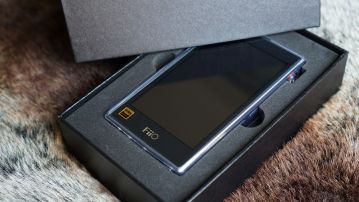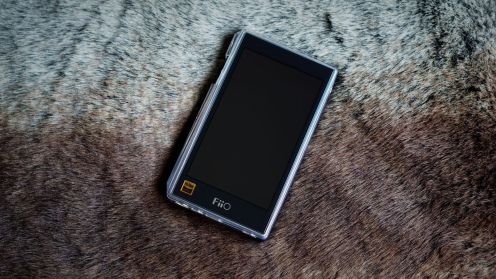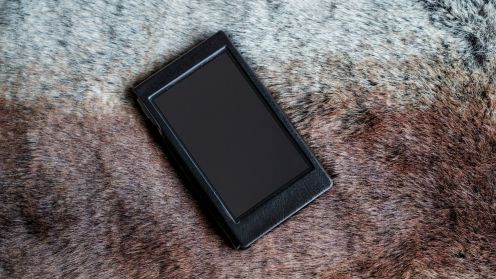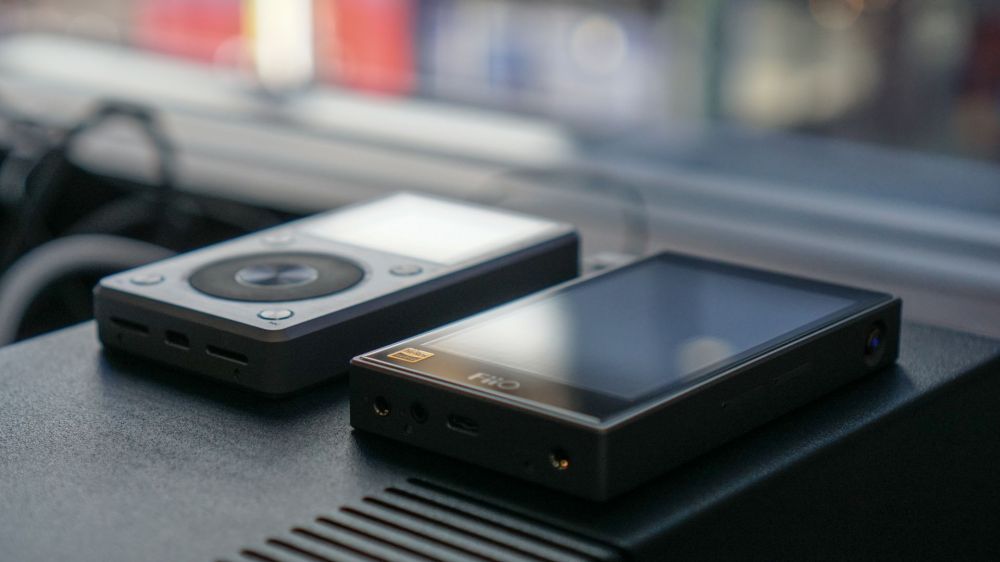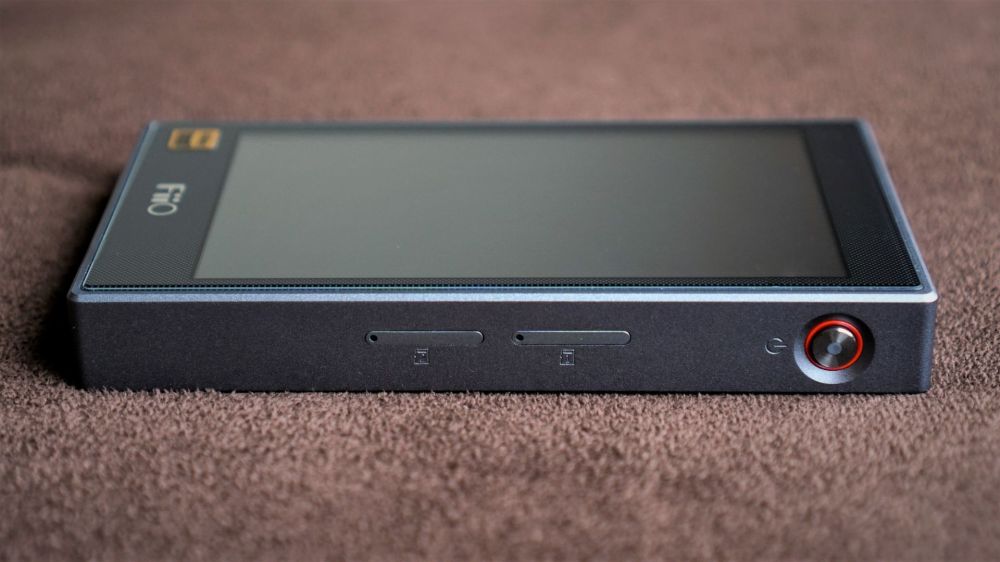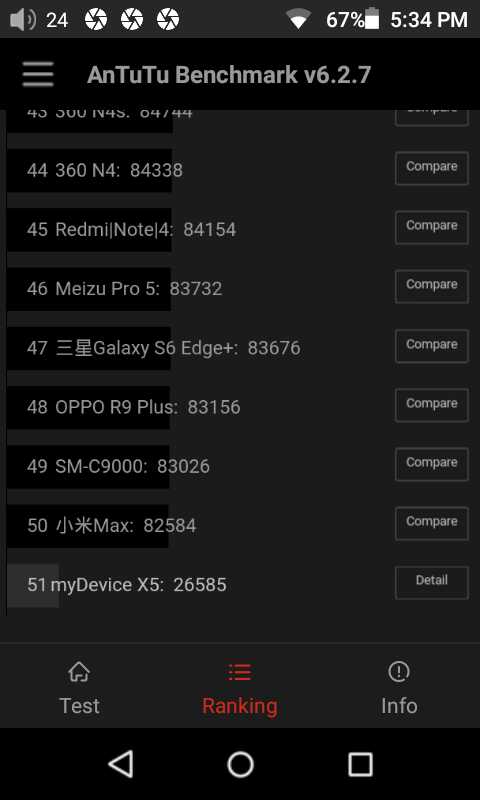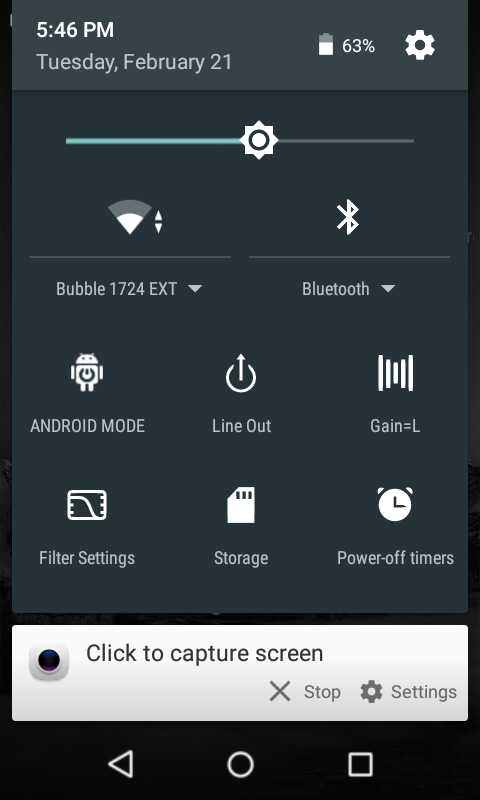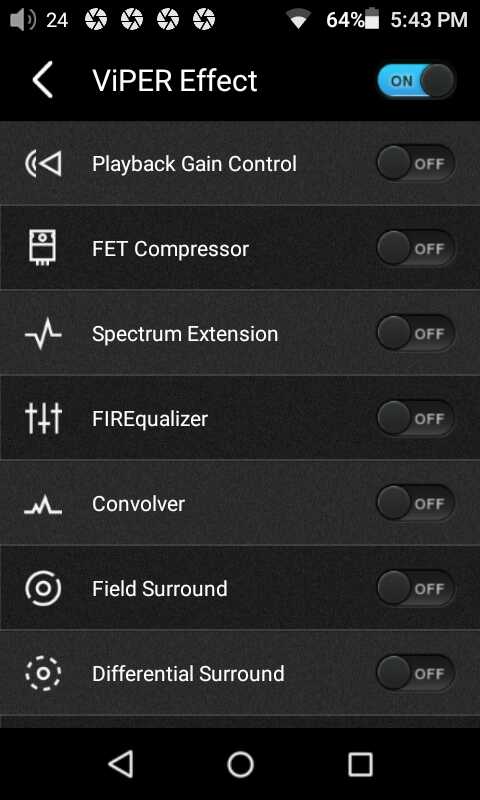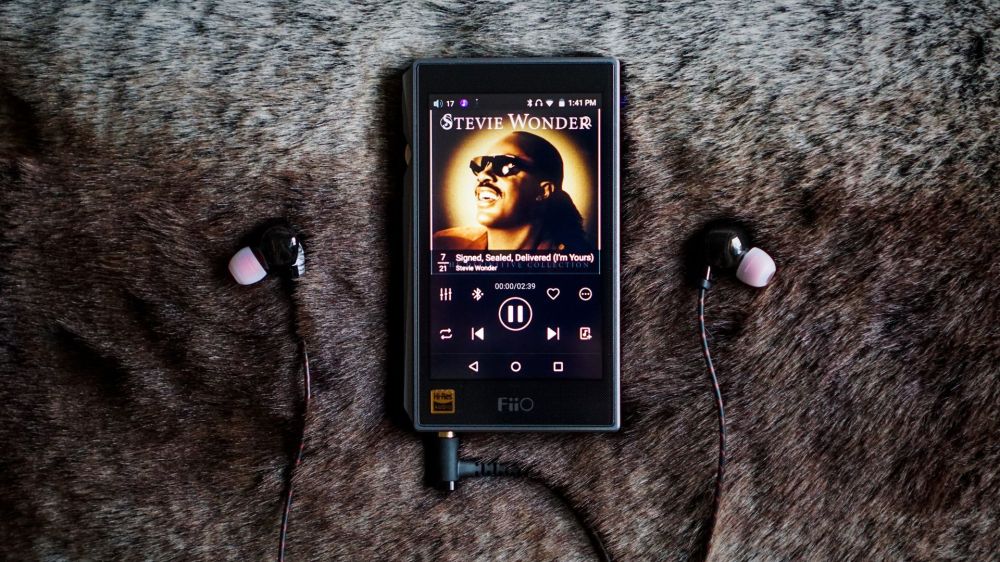FiiO x5iii-please see addendum at bottom for clarification of FiiO playback feature.
Many times, there is trepidation when you sign up for a possible tour review, at least for me. Your hope is to not only be chosen, but to give an open honest review, under the assumption that the manufacturer has put that trust in you. Kind of a scary thought, that if one did not openly convey their positives and negatives, it could hurt the direction where said company wants to go. Well, the chance of a single negative review, even from the tour hurting the company is quite slim one would hope, which helped alleviate my fears when signing up for this unit. A
HEALTHY dose of people signed up, so to be chosen was quite an honor. I thank
@FiiO for the opportunity to review the x5iii, a
MUCH anticipated unit indeed.
Digital Audio Players (DAP’s) are still
fairly new, blooming within the last decade or so. The plethora of new DAP’s coming out recently bucks this trend of a trickle. Many manufacturers are scrambling to put out an Android-based music player, with exceptional sound characteristics as well as a good baseline for Internet usage. I think we are at the cusp of the next big expansion in our listening pleasure. A player that can not only give us music listening of top quality, but also allow us to use the ubiquitous World Wide is a trend that I see. A trend to keep up with those hipper than your humble author into their musical stream and social stream. While the “common Smartphone” can do the same; the quality of music leaves a lot to be desired.
Some such as
@PinkyPowers espouse the virtue of keeping all separate. The Luddite in me agrees, for purities sake, we
should. But I can see in the near future a meeting of the two into a happy melding of sound, social media, work, and “phone calls.” For those of you not familiar with what that is, ask your grandparents…All joking aside, the mid-fi DAP market is flush with excellent choices from Bit Audio, FiiO, Shanling, Cayin, Onkyo, Pioneer and others. I have firsthand experience with the first four, and can say with somewhat of an authoritarian tone, they are all excellent. It is
HOW those companies manage that sound, which is different. Throw in the abilities of the Android-web versions and you can see how quickly this could not only cascade out of control; but how quickly it might all change.
Unboxing video:
Unboxing video
Build/Functionality:
Excellent fit and finish. Top quality build. No blemishes. Kind of nifty on the left side, what with the beveled edges tapering to the rotary volume wheel, complete with detents and gold accent. A very efficient box, too. Hardly any wasted space. This bodes well for protection, as well as saves money on packaging. An added benefit (huge to me!) is that this is more environmentally responsible. Nice job, FiiO.
Typical FiiO red ring around blue power button…subtle and a nice touch.
Easy to set up, FAST OS. FW 1.1.0. Tidal downloaded in nothing. MUCH better WiFi than i5. Functionality/aesthetics are quite pleasing. Another FW upgrade brought it to 1.1.1, during the test. After initial troubles, the FW updated automatically, including some stabilizing effects as well as album art to the lock screen. A nice touch is that you can now not only access the current music being played (and change), but also access the drop down menu from the lock screen, to change many items. A nice touch.
Streaming is good, Tidal sounds fabulous. It simply works without fuss. Streaming and surfing work well together. Small keyboard, but what do you expect. You can lock side buttons, so you do not inadvertently push them…Screen could be a bit bigger.
Loading the SD card was easy, just be careful when taking the tray out. Card is mounted upside down, too. Using FiiO’s own music app, was easy and the scan was quick and painless. Sound quality is quite good. Open, refreshing, unobtrusive. Clean, clear and crisp. Audio-wise this is on par with the Cayin i5, Opus #1 and Shanling M5. All of these mid-fi DAP’s work quite well (for music, we will only discuss that here..functionality later), so the presentation is what might be needed to separate the quartet. Running the gamut from full-on Android/WiFi/Bluetooth to the “lower” Android, to dedicated DAP’s; the decisions are not as easy as one might think.
Running Android 5.1.1, under extensive customization allows the x5 to function at quite a high level. Not top Smartphone level, but let’s be honest, you didn’t buy this for the Smartphone capabilities. You wanted an efficiently functional music player, which can provide you access to your tunes across multiple platforms, while
POSSIBLY surfing the pages of Head-Fi, and checking Amazon for the latest accessories for that King George parlor…see below for reference, sheesh.
 The finest place to listen to your FiiO...
The finest place to listen to your FiiO...
Upon turning the critter on for the first time, connecting to my home network, the FiiO automatically upgraded to Build # 1.1.0. I was told to update to this build, but watching the x5 do so automatically, and quickly was nice to see.
Buttons are somewhat-logically laid out on two sides, with all of the jacks/ports on the bottom. There has been talk of accidentally pushing buttons while trying to manipulate others; but to be honest you get used to it. Also, I am left-handed so this conundrum does not bother me much. While getting used to the layout, should one need worry about bumping other buttons? I would think not, but when you consider how bloody complicated these are, it is a trade off, which would not be a deal breaker to me. And to boot, you can disable those side functions so you do not accidentally bump them. A cop-out to some; a non-issue to me. Here is one of the few situations where being left-handed is a boon! OK, beside toll-booths and typewriters…

Since I run iOS, there was some reacquainting needed with the Android system. After about a day, I was versed enough to function without looking like an idiot who had a new expensive sports car, but didn’t know how to drive a stick… (I
DO know how, so kindly don’t go there…).
 Told you...
Told you...
Logical in sub menus, my only problem was remembering all of those sub menus, and how to get there! Think cockpit check system, and you get my point…
 Kind of like relearning Android OS...kind of...
Kind of like relearning Android OS...kind of...
A nice feature is the dropdown menu from the top, which provides you with quick options to change many functions. Pulling down twice from that top reveals a quick list of necessity functions ranging from your WiFi setting, to Bluetooth, to Line out/Coax digital out, to how your music is playing (storage/USB DAC), a quick hit of the low/high gain switch, filter settings, and whether you want the critter running in Android or Pure Music Mode (which switches all unnecessaries off dedicating all operations to “Pure Music.” The deeper settings switch can be accessed in the top right of this sub menu from the ubiquitous settings cog, allows deeper tuning of system items. Useful, functional and without unnecessary “frills,” is how I would describe the FiiO…efficient to a fault. My right side brain is having a real conundrum with this efficiency…
 Think RIGHT side...
Think RIGHT side...
Three buttons on the bottom center allow navigation around the Android OS. The back button controls many features throughout the apps, a home button, and the multi-tab button, where you can access everything, which is open. Yes, this is standard Android, but it is nice to see FiiO keep the basics of functionality intact. Again, logical in layout along with multiple options move the x5 ahead of it’s competition. Menus are clearly laid out, and logical of navigation. With the three buttons at the bottom always present, you are a mere two clicks away from another app, or the web.

 Illuminated navigation buttons
Illuminated navigation buttons
Pretty much everything is customizable, so we will leave it with that. With a 1.2mHz chip, this isn’t meant to compete with your Smartphone. No, it is meant to be competent and upgradable when new Firmware comes out. FiiO has chosen wisely in not loading the x5 with bloatware. We seem to be a far cry from the day when manufacturers loaded their wares with unneeded bloatware.
THANK GAWD!

Operation between screens is fairly fast…fast enough not to be bothered while our lightning fast Smartphones run circles around it…Don’t think tortoise/hare, though. That would be an unfair comparison. Think hare/less fast hare…
Navigation around the critter is good, efficient, and typical Android. Running 5.1.1 , it is solid. While no match for a smartphone, speedwise the x5 is quite adequate as mentioned above. Those familiar with Android phones will have no problem navigating around; and even those lunkheads of us using iOS, will gain sufficient competence to not look like a dolt whenst around you “Android-experts.”
 ME, not you as I met Android again...
Native FiiO Music App:
ME, not you as I met Android again...
Native FiiO Music App:
FiiO’s native music app is quite good, but pretty much frill-free, outside of VIPER. The ability to download and run your favorite music app gives many, many options. The first app I downloaded was Tidal so streaming allows multiple music platforms. Pretty much anything that can be downloaded from the Google Play Store can be run. Although I have not tried it, Apple Music can be downloaded and run. How well, again I do not know. With this plethora of options (and yes, I know these are not new, but how well they preform is “almost” a new feature), you can customize the FiiO to your hearts content!

Someone PM’d me regarding the use of Apple streaming music, as they had quite a bit of that. Well, I did not know, but did the legwork, and you can in fact run an
Apple Music app on the x5. So, multi-platforms are certainly a nice aspect of running an OS system on a DAP.
Music Functions (within each app):
Loading two sd cards, is quick and painless (much less so, than on my old x3ii, believe it or not). Once in the native FiiO music app, you are presented with the usual choices of genre, artist, album, etc. Nothing out of the ordinary here…move along…to the menu, which shows all of the songs. Scrolling right on a song reveals a cool menu option of
favorite, add to playlist and share via Bluetooth. Excellent options, indeed. Scrolling left give the delete song option.

 Scroll right for favorites, playlist and Bluetooth sending. Scroll left for delete
Scroll right for favorites, playlist and Bluetooth sending. Scroll left for delete
While in the individual songs menu, you have the options of
shuffle, repeat, share via Bluetooth again, favorite, add to playlist and the usual play functions. Scrolling right from this sub menu gives the option to see what songs are queued before and after the current song. In album mode, you get the whole list.
A decent, logical app, which will work for most people, the native app is nothing to sneeze at. Others will of course download their favorite such as Poweramp or others. With 480mW at 16 ohms, there is plenty of power for those apps to run most headphones, too. A multitude of supported file formats helps, too (as it should).
File format support
| |
Lossless:
| DSD:DSD64/128(".iso", ".dsf", ".dff")
DXD:352.8K
APE FAST/High/Normal:384kHz/24bit(MAX)
APE Extra High:192kHz/24bit(MAX)
APE Insane:48kHz/24bit(MAX)
Apple Lossless:384kHz/24bit(MAX)
AIFF:384kHz/24bit(MAX)
FLAC:384kHz/24bit(MAX)
WAV:384kHz/32bit(MAX)
WMA LOSSLESS:96kHz/24bit(MAX)
|
Lossy compression:
| MP3, AAC, WMA, OGG...
|
A quick word about the VIPER option. From what I have read, this is quite the popular sound EQ app/addition. My understanding is that this is the “go to” EQ for Android systems. While I have played around with it somewhat, I’m not sure this isn’t just a glorified native EQ. I’m sure there are those of you out there, who will now throw tiny pebbles and twigs at me for saying that, but tough...

It’s my review and I can say that if I want.

That tantrum said, I
can hear a difference, and I am still playing with it. One of the benefits, which I can see is that you can modify several different settings
WITHOUT changing the EQ. That might be the true beneficial aspect of this. I know, I would be loath to spend any money on some of the features before trying them out. I guess I am saying it works, but I am not sold on its benefits…yet…Addendum: it works!
Gear used:
FLC Technology FLC8S
MEE Audio Pinnacle P1
Audioquest Nightowl
Audioquest Nighthawk
Tennmak Pro
FiiO F1 (because I can!)
Schiit Magni 2
The majority of my time was spent with the FLC8S. This was easiest to me, and in all likelihood, I would IEM my upcoming x5iii. Using a headphone would be a luxury, which I would love to enjoy more but it simply doesn’t happen enough to me. And I will state, that the FLC8S unequivocally worked stunningly well. I am as impressed day to day with them as I am the x5. The synergy with the Shanling M5 was astounding, and what hooked me. The synergy with the FiiO is as good, and sometimes better (such as on twentyonepilots excellent newer song
Heathen). Both versions on Tidal are superb. The building of sound towards that bass flush is anticipation of
Heinz Ketchup quality. To feel the bass flow through the drivers makes me extol the virtues like few items have before. Just wow…
 Anticipation...
Anticipation...
The Nighthawk gave a wonderfully airy sound to any music played. Whether through the sd card, or Tidal; overall quality of sound was worth the time. One could say that the clarity of the FiiO was met hand in hand with the airy sound from the NH. One would not be wrong. And one would be happy to enjoy the pair.
Brief listens through both the P1 and Tennmak’s Pro allowed for verification, that the FLC8S is pretty damn good. I can say that I liked all three, but the FLC8S is my go-to, until my Vibro Labs Aria arrives. The P1 was astounding yet again. This $200 IEM keeps coming back to me and I must smile. While the bass is lacking to me, the overall clarity and crisp nature of the sound makes it just quite pleasant with which to listen. Through Tidal or FiiO native music, I enjoyed my time yet again with the Pinnacle.
The Tennmak, is probably my favorite “budget” IEM. Retailing for 9x
LESS than the P1, I really like the sound characteristics. Much deeper and palpable bass, the only thing holding this critter back is that it cannot handle complicated music like the expensives with which it tries to compete. That and because of the bass, the sound can be a bit hard to separate instrumentation-wise. I still use them regularly for workouts and general quick listens. They worked quite well with the x5. A worthy addition to anyone’s collection.
Sound signature:
Smooooth.
Slightly warm. Good bass through Tidal, sound stage is good, and pushed forward. I do not mind. Closer to neutral than i5, but with a better bass push. Maybe it is an authentic bass sound, or the Tidal tuning. There is a jet-black background between songs on Tidal. Velvety of sound has been thrown around in the descriptions by some. I would concur, and add that the sound might be the equivalent of experiencing King Henry’s sitting parlor on the finest sofa you may have set your bum upon…while reading politely and listening to the Harpsichord play. Just a thoroughly enjoyable time is had. Almost neutral, but slightly north of neutral is how I would describe the signature. Instrument separation where it should be, true to the artist. Good depth and width of the sound stage, and a cohesiveness that allows the musical selection to show through.
A brighter, more clear sound than my 6+, and I would hope so! That is all I need say there...Compared to the MBP-the x5iii is a slightly more forward sound. Those cymbal shots, which are up front (as they should be in any twentyonepilots song…) on the x5iii, are
SLIGHTLY behind center stage on the MBP,
without the Shanling UP. With the UP inline, the mids are pushed forward, and a deeper bass than the x5iii can provide is had. But that’s not really a fair comparison, so…
Running the x5iii through its paces, I alternated between Tidal (ummm…no, actually you didn’t; you ran one dedicated program a day, you moron…) and the native Fiio music app. Tidal free provides a really good basis for comparison, because even that level of music is quite good (to me). I was mighty impressed with how the FiiO handled the songs without any delay (except the initial load-up of a change in artist), while allowing me to surf the web without pause. The only glitches to speed and functionality were from my home WiFi going goofy and playing hide-and-seek with me…I now hate hide-and-seek and will punch anyone who says otherwise…
 My LEAST favorite game, as of yesterday...
My LEAST favorite game, as of yesterday...
Anywho, the FiiO came through all trials with nary a glitch or hiccup. As each time of use passed, I became more and more impressed. This was fast moving to the top of my DAP list, knocking the heck of the things in front of it to get there, too. Over the last year, I have had the privilege to test some fine equipment; and I can say that each time I was impressed with
something from each DAP. Each have their benefits whether it was sound quality, ability to play music seamlessly, or the functions that go along with said DAP. With the x5iii, I can honestly say that all of the functioning parts came together, and well…. just worked. And the benefit? The sound was close to the top, if not
AT the top against all of those other DAP’s. A true tip of the hat to FiiO for making a synergistic device, which caters to those who favor streaming,
AND those who are stuck with the “ancient” technology of sd cards. Each format can sound simply superb. I say this listening Stevie Ray Vaughan (God rest his soul) on FLAC and my 64gb sd card. The pull of his guitar on
Voodoo Chile is magical, deep, near-religious, smoky, dark, and mysterious. A true soul-rendering version to the original by Jimmy Hendricks. One cannot help but come away with chills and be impressed that not only is the song magnificent, but the presentation by the x5 is true to meaning. I must have another
Cold Shot of single malt to calm my nerves…Man, he is good…and so is the FiiO. This combo was meant to be together…period. GOD, I miss him…
 Taken from us too early...
Taken from us too early...
A side note: a huge portion of my passion for music comes from Stevie Ray Vaughan. Lucky enough to see him twice in the big (both outdoor), and twice more AFTER each show in a small venue (
INTIMATE actually); his passion was unquestionable. His oneness with the guitar showed on each little scratch, each little divot, each stretch of string to get that little extra out of the note was something I will never forget…ever. He was taken from us way too early. I was “lucky enough,” under the circumstances to see Eric Clapton, in Kansas City the night after the plane crash. The two had just performed the night before at Alpine Valley, in Wisconsin. It was Eric Clapton’s seat, which SRV took on that fated night flight…something that clearly shook Clapton as he played for three-and-a-half hours
straight that next night in KC. He never said a word about anything. He let his music play tribute to SRV, and it did. There were times you could hear a pin drop in the outdoor audience, and then a collective sob of sorrow whilst EC played. That was the only way it could be, an impassioned musical tribute to a friend; a player we all collectively lost that previous night. I can still go through every song played that night.
If the FiiO can bring out the passion, the sweat in SRV’s music, then I am smitten. I am taken back to the last time I saw SRV live, and it was a good night as he sat on the stage at Starlight Theater, swinging his feet as he played
Lenny, and we listened. We closed our eyes and simply enjoyed the music. It was perfect.
The FiiO is not, but it is an exceptionally well-versed attempt at such. And as such, the highest praise I can give is that my own personal unit is on order awaiting shipment. I had no intention what so ever in doing that, but I bit. I bit hard, and after a glorious week, I do not regret it one bit. Or is that bite?
Negatives of the FiiO are there, but pretty much few. I’m not a real fan of the black leather case…to me it makes operating the buttons much harder. Maybe it will break in, but I prefer the clear plastic case, with the benefit of looking at the cool device. While the volume wheel looks very fine with the gold accent, I would like a quicker response to large inputs. To raise the volume a good bit takes several tweaks of the wheel. I’m not a big fan of that. As
@x RELIC x mentioned, bumping the side buttons is annoying, and should be changed. I would agree, but with the caveat that being left-handed has an advantage here…I can carefully wake the item from sleep, and raise the volume with one hand. Can’t say I’ve ever heard of a “left handed DAP,” before; but I will take it!
FiiO’s native music app is good, quite good. Throw in the addition of VIPER, even with the add-on purchases; and you have a fine baseline. A function, which I deservedly call a flaw though is that when you pause music, and exit. Upon return, the app resets to the baseline start, instead of remembering where you were. I find this highly annoying. To the point, where I will probably download another music app to try with my own. Neutron gets good reviews, so that will probably be my first option. Coming from iOS, I am devoid of Android music app knowledge, so I will rely upon the fine peeps here. Maybe a future FW update will correct that. Not a deal breaker, simply annoying, it is.
 How I felt using the native FiiO app, but not PLAYING it...
How I felt using the native FiiO app, but not PLAYING it...
Beyond that, I can find little to fault. A superb attempt at an Android DAP, and one, which will probably be studied closely by the competition.
Comparisons:
Baseline information on the competitors:
- Cayin I5- A Ferrari with a flat tire limited to the speed limit. But, it IS still a Ferrari. Yes, a red one.
- Shanling M5- an old trusty (I said trusty not rusty) Range Rover…it just works, even with the quirks it possesses, and goes anywhere.
- Opus #1- VW R32-fast, fun, it just works. Unobtrusive, almost boring, but stunning in performance. Dark gray in color…interior, too. One, which those in the know…well know.
- FiiO x5iii- an Aston Martin Vanquish S with the street creds to back it up.
- iPhone 6+ boring baseline Smartphone (no auto analogies, except maybe a “competent” Toyota Corolla…)
x5iii v i5:
From memory, the i5 provides a warmer sound base with which to start. I REALLY liked the sound of the Cayin. Clean, clear, crisp like that mountain cabin, one cannot escape the fact that this is a well “north of neutral” warm sounding DAP. My tastes tend toward the dark side, so I did not mind. A thoroughly enjoyable sound, mixed with the niggles and snafus of a near-first time Android-based DAP in this range. I commend Cayin for helping make the i5 such a fine DAP. It is an excellent foray into the mid-fi range, and one, which I anxiously look forward to upgrades in, or their revised model (no hurry, it is still quite good). But, compared to the x5iii, it falls short. The x5 is easier to navigate through, quicker of operation, and generally more efficient of operation. Plus two card slots help, along with a “newer” Android OS makes it functional in the interwebbie-world for a longer time.
Sound wise, the x5 runs slightly south of the i5, and I do not mind.
ZOOT ALORE! He likes something that is
LESS warm!!! Oh, shut it…yes in fact I do. While the FiiO is
SLIGHTLY less warm, it is still north of neutral, just not out of sight warm like the i5
tends to be…A bit crisper (crispier?) a smidge more clear, and a sound closer to neutral has it’s benefits. One is that you can EQ that sound to your preferences. Running VIPER while listening to Stevie Ray, you are enveloped in the music, taken into the experience. With a sound stage slightly larger than the intimate Cayin, you get the whole musical experience. The i5 is no slouch, and if my preferences were based solely on sound, then the Cayin could very well win…who
DOESN’T want a Ferrari?! That said, the early-stage adoption of an older Android OS while allowing Cayin a base in which to develop; it does put operational “skills” behind the newer/ slicker 5.1.1 on the x5. If we are talking whole package, the x5 wins, but an excellent try is had by the i5. It really is a worthy DAP.
Opus #1 v x5iii:
I was lucky enough to have
@nmatheis’s #1 in house for the entirety of my time with the x5. And I was glad. Arriving slightly before the FiiO afforded me time to compare it to the i5, as well as my trusty (
NOT RUSTY!) x3ii. The Opus is quite a stunning unit. Extremely easy to operate, it is a simple DAP, that focuses on
MUSIC. And music, only (future upgrades on the upper level Opus #2, will bring Android operations on par with the x5iii, apparently). With dual slots, it matches the x5iii. Built of plastic and aluminum, the feel is slightly more comfortable holding than the FiiO. Make that less worried, not more comfortable. I like the way it feels. I like its heft. If possible, sound characteristic-wise, it is between the i5 and x5iii. Not neutral, not overly warm, it is an extremely pleasant sound. Again, I
REALLY enjoyed the sound of the Opus (I am currently using it to burn in my Audioquest Nightowls, so it is in good hands). It does have a slightly narrower sound stage than the FiiO.
SLIGHTLY. Instrument separation is excellent, bass is good with wonderful reach, and a small roll off of treble (small…), gives this stunner the warmish sound I hear. A thicker sound is what I hear from the Opus, versus the x5, too. Robust would not be an embarrassing term to describe the sound. And with dual sd slots, you should have plenty of opportunities to listen.
If quality sound characteristics are what you desire first and foremost, then you would be hard pressed to beat the Opus or the Shanling in this price range. Both are superb examples of exceptional sound capabilities. Mind you the FiiO and Cayin are no slouches, but the pure of you, dear reader, (yes,
@PinkyPowers I’m thinking of you…) would be well and good to consider the #1 or M5. In fact, I peruse the Head-Fi classifieds for a used example of either, daily. My bank account is very worried…

 M5 v x5iii:
M5 v x5iii:
The Shanling came my way (thanks Nik!) at the same time as a loaner FLC8S, which I ended up purchasing (used from eBay) after my audition. I was stunned that such a device could have such a pure sound. Almost dead neutral, the music spoke; and spoke volumes. The sound was like looking at that spectacular mountain scene, then walking through it, on a fine summer day. There was no hiding anything with the Shanling. I liked that. A lot. Compared to the FiiO, this was probably the closest of sound signatures. Vibrant (think clarity) of sound, depth of quite acceptable stage; the M5 is excellent, and I would rate it against
ANY of the devices mentioned in this review. I would happily own one for pure music’s sake. And, rumor has it, that they will soon join the touchscreen Android scene. I am extremely excited at that prospect. The only knocks against this excellent device (to me) would be the finicky scroll wheel (which to me was not as intuitive to use as I thought it should be), and the slightly smaller screen. A single sd slot is also a mark against it. With adequate power, though and the excellent AK4490 chip, it does compete, and VERY well. Sound wise, there is no embarrassment in the Shanling house. Think clean and clean view, and you get the message.

A final comparison of the four would yield:
- Three have volume wheels (weeeeee!): x5iii, M5, i5. The i5 wins here, simply sexy and smooth of operation. To raise the volume a good bit on the x5iii, takes quite a bit of effort and scrolling (rather annoying). The Shanling is similar to a toy bottle cap, and I do mean to state that. That to me is one of its major downsides. If it had a better tactile feel, that would improve the functioning immensely.
- Aesthetics of design: Again, the i5 wins here…just flat sexy. Slim, no waste of space and a thin body. Most simplistic of design, goes to the #1. Nothing to see here, move along…The M5 is the eccentric one of the lot, and that wheel simply confirms it (not bad, mind you, just annoying…). Finally, FiiO went conservative on the x5iii. Nothing wrong with that, and it is easy to operate in hand (EXPECT some of the mentioned problems with multiple button touches)…One can simultaneously press the on/off and either the play/pause or fast forward/reverse buttons. While turning the side buttons off in the settings can compensated for, should one have to? An annoyance, one must decide if it is worth living with...
- Two card slots: x5iii & #1. One card slot: M5 & i5. That is not a major deterrent to me. While it is inconvenient, I really do not care.
- Final verdict on the fine four: All produce excellent sound characteristics ranging from slightly north of-neutral (x5iii, to me); to thick, stout and warm (#1); to bright, vibrant and cheery (M5); to pretty darn warm (i5). To say that I like all four would be an understatement, which will be explained below…
Final conclusions:
As I listen to Lindsey Stirling on the FiiO, my time comes close to ending. This would normally make me sad; except that I will have my very own in hand within a couple of weeks. This is the highest regard I can give to a piece of audio kit, which I review. And yes, I know that part of the appeal from the manufacturers standpoint is that the tour participant
MAY end up with one. But, I am extremely judicious in that regard. Otherwise, I might find myself with all of that new kit, under a bridge without the means to charge any of them! (Wife-unit would have me hide…)

FiiO has had plenty of time to mull over decisions, make changes to their units, learn from mistakes and improve upon them. The x5iii is a stunning example of this thought and commitment to making the audio products they sell. Are they perfect? Heck, no. Does this do anything radically different? No, again. Is it groundbreaking? Certainly not. But what the x5 does, is take all that collective wisdom, and improve upon what needed improving. First and foremost, they addressed the shortcomings in their own devices and made those improvements. When you then throw in the tweaks done using other manufacturers items, you get the sense that FiiO has (hopefully) learned from their past mistakes, and will now take the necessary time to run this out,
AND correct the mistakes of their other units. My firsthand knowledge is limited to this, and the excellent x3ii. I like both, a lot. But as others have pointed out, FiiO has had to work overtime correcting some of their other products operations. My hope is that they continue to do this, while sending us lucky peeps stunning devices such as the x5iii. We all win if that is the case.
I want to thank
@FiiO for the opportunity to have this unit so early in the cycle. I feel honored to be included, and thank them immensely for the fine unit I have in hand. FiiO truly trusts those of us with the tour unit, and take our collective criticisms seriously. One need only look at the response time on the Head-Fi thread to understand their commitment.
*Addendum*
After conversation with @FiiO, it was determined that I did not have the "resume" feature toggled on within the FiiO native music app. I regret not searching the features more, and appreciate the clarification by FiiO. A picture of the feature is shown below:


My apologies to the community for this oversight.
Final review video:
Well done, FiiO.
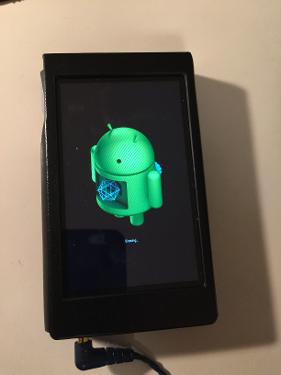
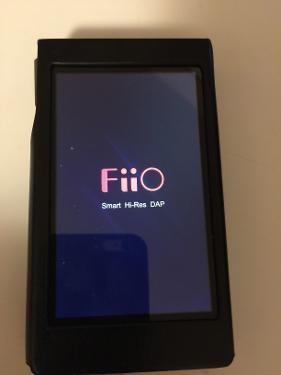


















 the titanium one can live at work, the x7 may get relegated to the car
the titanium one can live at work, the x7 may get relegated to the car






























































][/color])



